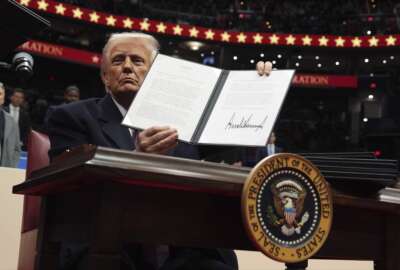An overlooked but crucial shutdown question: Who’s actually open and who’s closed?
“Shutdown” is too coarse a word for what happens during a funding lapse. The government acts more as a patchwork. For employees, the challenge is knowing who...
With days left to finish up budget work, the only question is whether Congress can muster the will to pass a continuing resolution or whether it will let funding lapse. The latter option would result in a government “shutdown.” I use quotes because the government doesn’t really shut down. NORAD will still look for incoming missiles. Social Security will still issue checks. Air traffic controllers will still guide airplanes.
Policy, planning, administration, procurement, HR, staff support, national parks crews — they’ll all stay home, off the job. Many walk-in offices will close. Some noncritical call centers, like tax payer advice centers of the IRS, will go dark.
In short, the government will partially operate as a mishmash of open and closed facilities and functions. Some will have a skeletal, snow-day feel. For example, in 2013, we checked in with the Merit Systems Protection Board. The five members continued to work, but without any support staff. Almost by candlelight. I imagine pizza delivery services had a great week.
This morning I interviewed Don Kettl, professor at the School of Public Policy at the University of Maryland. He says lack of visibility into which offices are open and which are shut during a shutdown adds a complicated and often overlooked difficulty during funding lapses.
For multicomponent agencies and departments, the internal dependencies can throw up unexpected walls. Suppose a VA clinical facility, which presumably would continue to operate, needs a record of some sort from a shuttered financial or filing office. An employee at the closed component by law is proscribed from sending materials, even voluntarily. That’s one reason some offices require people to turn in their government issued computing and mobile devices when they trudge out the door for that Metro ride into the unknown.
Similarly, interagency or interdepartmental dependencies falter when the government operates as a chiaroscuro patchwork.
Says Kettl, “If I need to work with other agencies to get my job done, are they going to be in business or not? And that’s something that’s often very hard to figure out. ” He adds, “it may be hard enough in one’s own office to sort things out. Understanding what the partners are up to is even harder in some cases.”
I asked Kettl how the White House could shine light into this dark corner of shutdown experience. He had three suggestions: Give clarity about whether a given office is open or not, be clear about what support will or won’t be available, and provide information about who in the network will be available or not.
“If you need other agencies to do your job, it’s critical to know whether they’ll be there to help you do the work along the way,” Kettl said. He added that the third piece of information tends to fall through the cracks because employees tend not to know what’s going on in their own agencies.
This all suggests a great idea for the next dashboard. The White House would issue guidance for offices to know whether they can remain open legally. Agency managers make the determination, report it into a web application, and voila, an online dashboard of who’s open and who’s closed.
How about an app for that?
Copyright © 2025 Federal News Network. All rights reserved. This website is not intended for users located within the European Economic Area.
Tom Temin is host of the Federal Drive and has been providing insight on federal technology and management issues for more than 30 years.
Follow @tteminWFED






